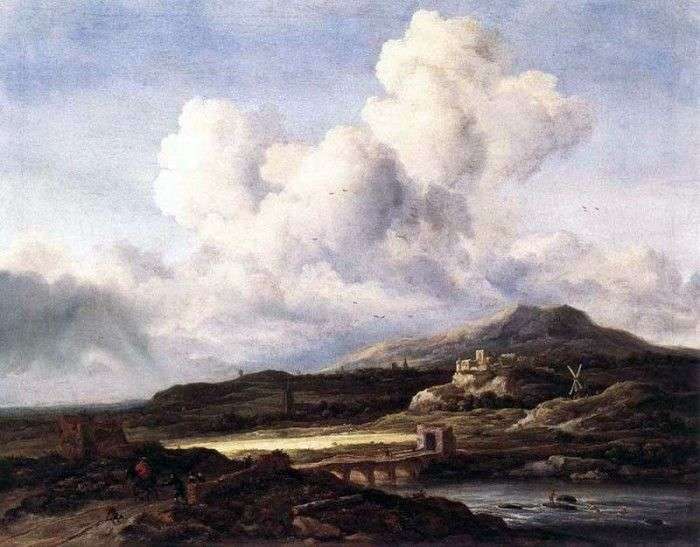
The term “panorama” was introduced at the end of the 18th century to refer to a picture covering almost the entire horizon circle. As a rule, the panorama is combined with the volumetric layouts of the foreground.
In the 18th and 19th centuries, such views were enjoyed by the public. Nowadays, the meaning of the word “panorama” has changed somewhat, and now it is accepted to call any wide, “extensive” view as a panorama. It is in this sense that this term is applicable to the work of Reysdal.
The scenes for his panoramas often became the views of his native Haarlem or half-fictional scenes. Working on the composition of the panorama, Reisdal always chose a high angle, which allowed him to lower the horizon line and leave as much space as possible for his beloved cloudy sky.
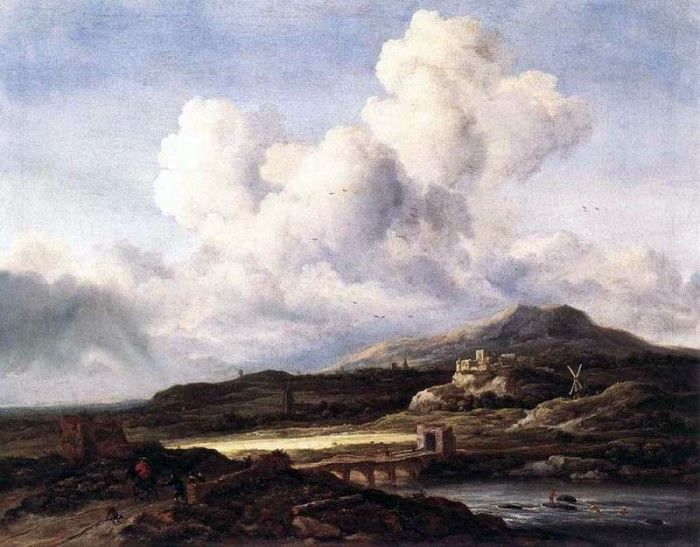 Panoramas – Jacob van Reisdal
Panoramas – Jacob van Reisdal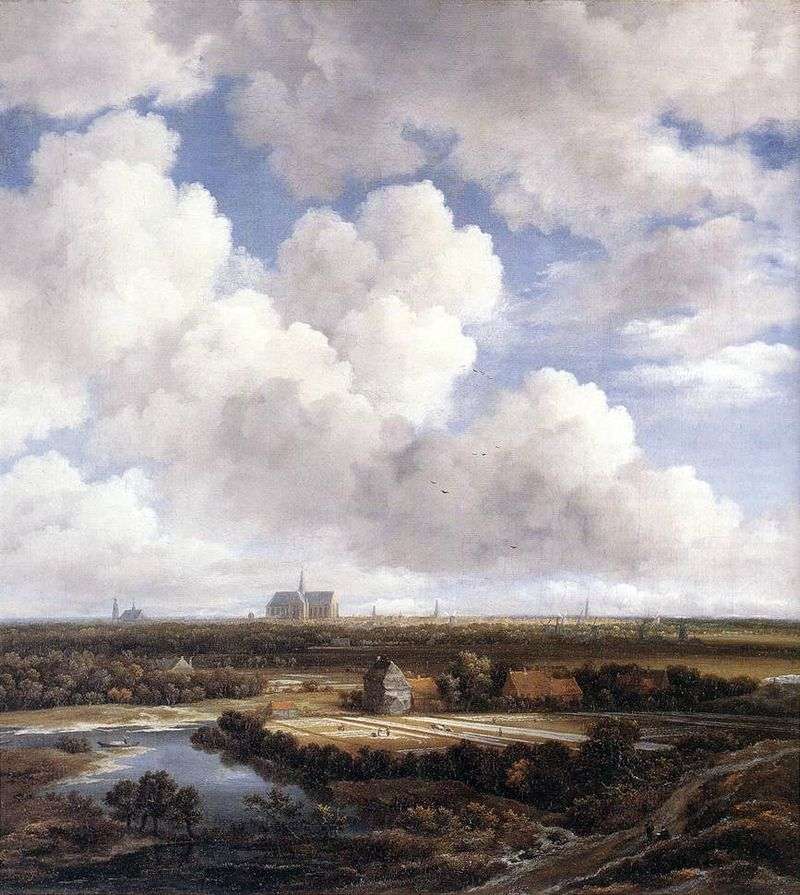 View of Haarlem by Jacob van Ruysdal
View of Haarlem by Jacob van Ruysdal Panoramas – Jacob van Ruisdal
Panoramas – Jacob van Ruisdal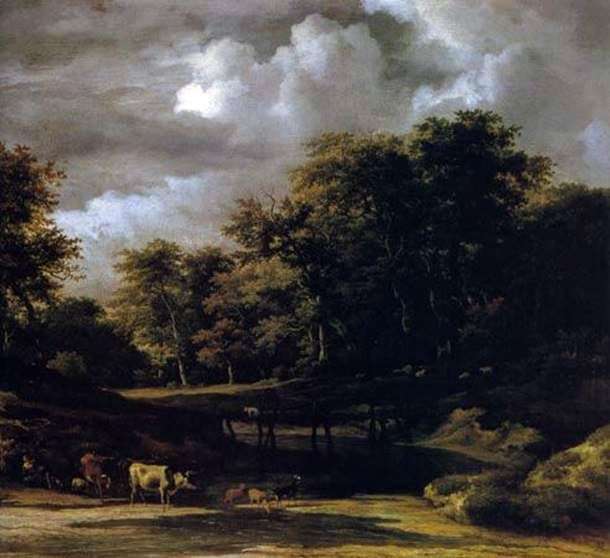 Forest Landscape by Jacob van Ruysdal
Forest Landscape by Jacob van Ruysdal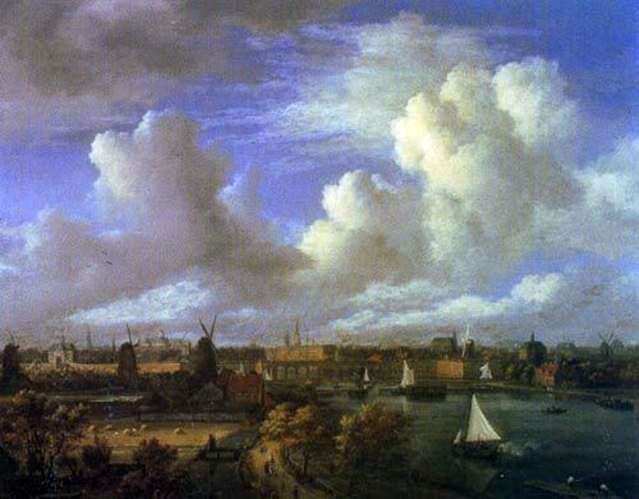 Urban Views by Jacob van Ruysdal
Urban Views by Jacob van Ruysdal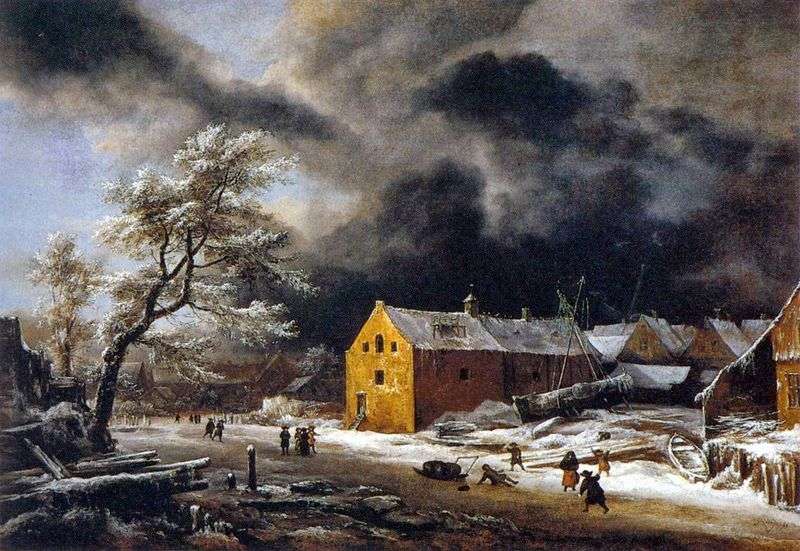 Winter evening by Jacob van Ruysdal
Winter evening by Jacob van Ruysdal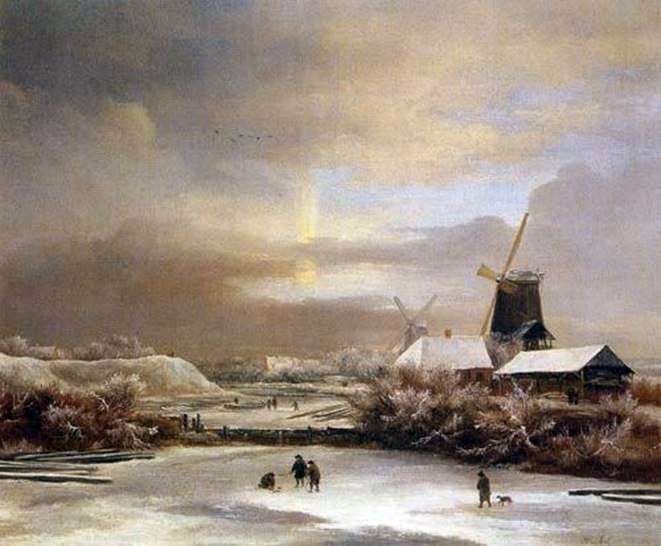 Winter Scenes by Jacob van Ruysdal
Winter Scenes by Jacob van Ruysdal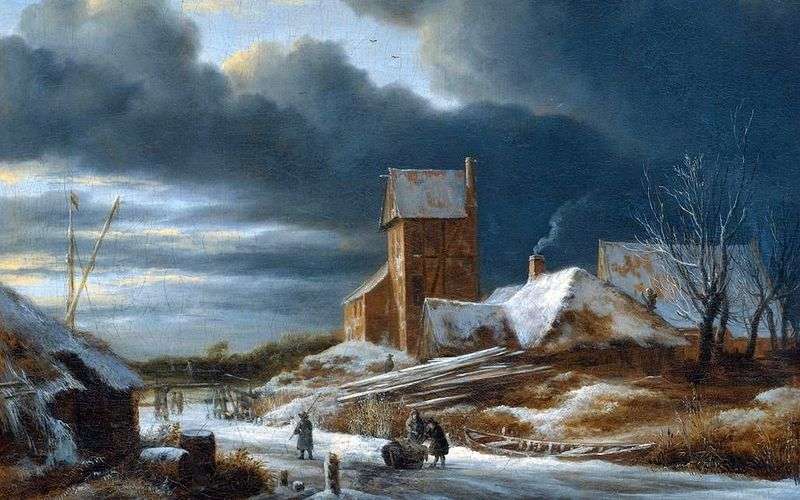 Winter landscape by Jacob van Ruysdal
Winter landscape by Jacob van Ruysdal